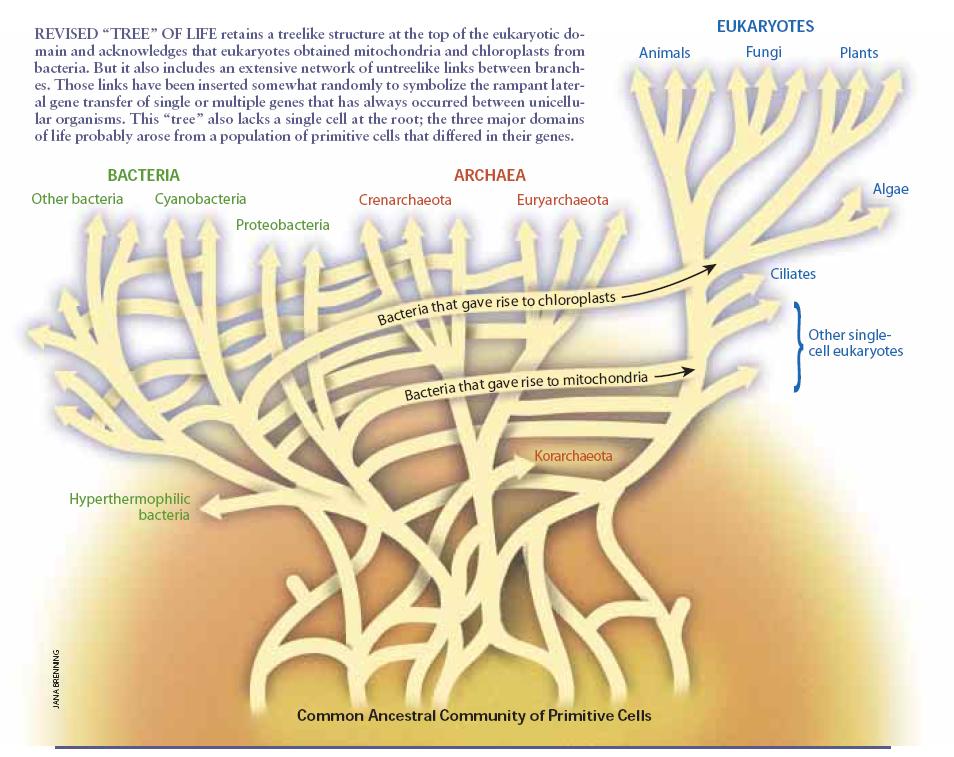Nesslig20
Active Member
It has been a while since I have posted something on the League of Reason. A lot has changed indeed.
For more than a year now, along with others I have helped with Jackson Wheat as an editor for the scripts of his videos. Last year in August, we came across a channel that had (at the time) only one uploaded video. It's called "Darwin’s Biggest Problem | Long Story Short: Evolution" made by someone called "Long Story Short" (LSS). When I first watched the video, I was impressed by the art style and his witty manner of speaking, although that's pretty much all I can say about it that was positive. The content was your typical creationist dribble on the "Cambrian-SPLOSION" [Though LSS has objected to being called a creationist]. In fact, we recognised that some of his arguments were taken from Stephen C. Meyer's "Darwin's Doubt". So, Jackson Wheat published a two-part rebuttal video.
Which led to an online discussion between Jackson and LSS in September. It was okay, he mainly stuck to the point, though it mostly didn't go anywhere eventually. At the end, I asked Jackson to notify LSS about his outdated citation from 1993, which he uses to claim that the Cambrian Explosion lasted for "just" 6-10 million years - which is obviously intended to mean "too short" for evolution.
However, quoting from the paper.
Then a few months later in January, LSS made another video, this time on homology, titled "Is Homology Evidence for Evolution? | Long Story Short". He makes the argument that using homology as evidence for evolution is circular reasoning - and more. Not only that, it was published on the Discovery Institute's Youtube Channel. Yeah, that's right, the one that doesn't do much discovering. This video also needed to be correct, so Jackson Wheat published the following:
This time, it didn't led to a discussion on a live hangout. Rather, LSS replied with a response video:
"Answering bad arguments for evolution: homology. | Long Story Short"
Oh boy was it bad. LSS omitted the very substance of Jackson's arguments. Very often, he simply does the following:
Step 1: Play a short clip with Jackson expressing his disagreement.
Step 2: Cut off right before the explanation FOR the disagreement.
Step 3: Proceed with an objection to the disagreement (often by reasserting the same argument),
which was (frequently) already addressed by the explanation that was cut out in step 2.
He also made one of the silliest claims I can think of, like how the platypus is supposedly a "chimera" that doesn't fit in the evolutionary phylogeny. I wrote a detailed rebuttal, which I linked it in the description of LSS's video. I got the following responses:
Right at the beginning of March, Jackson also published a rebuttal to this, which also is a good summary of the rebuttal I wrote.
Now, little over a week later [today], LSS made another response video.......
.......this is where LSS went into a nose dive for the worst.

[continued in next post, due to size limit]
For more than a year now, along with others I have helped with Jackson Wheat as an editor for the scripts of his videos. Last year in August, we came across a channel that had (at the time) only one uploaded video. It's called "Darwin’s Biggest Problem | Long Story Short: Evolution" made by someone called "Long Story Short" (LSS). When I first watched the video, I was impressed by the art style and his witty manner of speaking, although that's pretty much all I can say about it that was positive. The content was your typical creationist dribble on the "Cambrian-SPLOSION" [Though LSS has objected to being called a creationist]. In fact, we recognised that some of his arguments were taken from Stephen C. Meyer's "Darwin's Doubt". So, Jackson Wheat published a two-part rebuttal video.
Which led to an online discussion between Jackson and LSS in September. It was okay, he mainly stuck to the point, though it mostly didn't go anywhere eventually. At the end, I asked Jackson to notify LSS about his outdated citation from 1993, which he uses to claim that the Cambrian Explosion lasted for "just" 6-10 million years - which is obviously intended to mean "too short" for evolution.
However, quoting from the paper.
Note that there was an initial “slow” diversification of 14 million years before the exponential increase of 5-6 million years. That’s already 20 million years in total. And what’s more, note that they accepted an age of 525 Ma for the boundary. That paper was from 1993. The Atdabanian-Botomian is now dated to 516 Ma. So the period of exponential increase lasted from 530 to 516, which is 14 million years. That's 28 million years in total. Is that still "too short"? I have no idea what he would consider it to be too short.Analyses of the Cambrian faunal radiation indicate that diversification followed a logistic pattern of increase (1,2,34,35). Our calibrations shows that the initial (Manykaian) interval of slow diversification followed the ediacaran faunal epoch by no more than 20 million years (m.y.) and lasted approximately 14 m.y. In contrast, if we accept the age of 525 Ma for the Atdabanian-Botomian boundary, then the Tommotian-Atdabanian period of exponential increase of diversification lasted only 5 to 6 m.y. In any event it is unlikely to have exceeded 10 m.y.
Then a few months later in January, LSS made another video, this time on homology, titled "Is Homology Evidence for Evolution? | Long Story Short". He makes the argument that using homology as evidence for evolution is circular reasoning - and more. Not only that, it was published on the Discovery Institute's Youtube Channel. Yeah, that's right, the one that doesn't do much discovering. This video also needed to be correct, so Jackson Wheat published the following:
This time, it didn't led to a discussion on a live hangout. Rather, LSS replied with a response video:
"Answering bad arguments for evolution: homology. | Long Story Short"
Oh boy was it bad. LSS omitted the very substance of Jackson's arguments. Very often, he simply does the following:
Step 1: Play a short clip with Jackson expressing his disagreement.
Step 2: Cut off right before the explanation FOR the disagreement.
Step 3: Proceed with an objection to the disagreement (often by reasserting the same argument),
which was (frequently) already addressed by the explanation that was cut out in step 2.
He also made one of the silliest claims I can think of, like how the platypus is supposedly a "chimera" that doesn't fit in the evolutionary phylogeny. I wrote a detailed rebuttal, which I linked it in the description of LSS's video. I got the following responses:
LSS: Thanks Nesslig, some genuinely fair points but I'm afraid we're largely talking past each other. If you and Jackson can ease up on the name calling and accusations maybe we can have a reasonable dialogue, but we're not going to get anywhere with this sort of thing.
ME: What "names" did I call you? At what point did either me or Jackson call you "names"?
LSS: Do you really not know? You, Jackson and other commentators frequently pull the creationist card and all the caricatures and tropes associated with that (as if I've ever said anything about that or ever appealed to any religious document or belief). And you're also very quick on the "misleading" "misrepresenting" and "quote mining" labels — these claims are all spurious as far as I'm concerned and mere emotional insults. They generate more heat than light, as they say.
You also claim that I'm not listening and cutting Jackson off (when I specifically link to his video and encourage everyone to watch it). In this doc you interestingly try to psychoanalyze me as well as ruminate about my motivations and attribute other fallacies to me. Just a quick scan and I'm noticing many things we would agree on (but you seem to think we disagree), but also substantial problems with it (where you completely misunderstand my point), I'm happy to have a polite conversation but not if this is what you have in mind. I want to discuss the facts of the matter rather than the sociology involved.
ME: I cannot say for other commentators [obviously]. But neither Jackson nor I have called YOU a creationist. When Jackson stated at 9:28 "This is really rich coming from creationists, yes creationists, look up the Discovery Institute's wedge document " it was in reference to...well...the Discovery Institute (as your video was firstly published by them). If you say you are not a creationist yourself, I will take your word for this, but I cannot do the same thing for the Discovery Institute. See point #14
You did make misleading arguments, you also made several misrepresentation and you made quite a few quote mines and fallacies. None of these are "name calling" nor do they necessarily imply malicious intent on your part. They are criticisms, don't take it personally.
You cut Jackson off right before he could explain the points he made. Like when you said at 2:25 that you weren't sure how you incorrectly framed Berra's analogy...right after you cut him off before he explained how you did framed it incorrectly. And this isn't the only instance of something like this happened. Just because you linked the video in the description, that doesn't automatically absolve your video from any wrong doings such as these.
I never questioned your own motives. I did say that I suspect you are "possessed by Morton's demon", which is a reference to "conformation bias", however confirmation bias is not a "motive". Besides, I also said my opinion on that [is] not important, as it is just my opinion. What is important is the fact that your video contains numerous errors and misrepresentations. And that's what I focused on for the entire response.
I am also happy to discuss the facts, but not when you take everything as a personal attack like this.
Right at the beginning of March, Jackson also published a rebuttal to this, which also is a good summary of the rebuttal I wrote.
Now, little over a week later [today], LSS made another response video.......
.......this is where LSS went into a nose dive for the worst.

[continued in next post, due to size limit]
Last edited:











